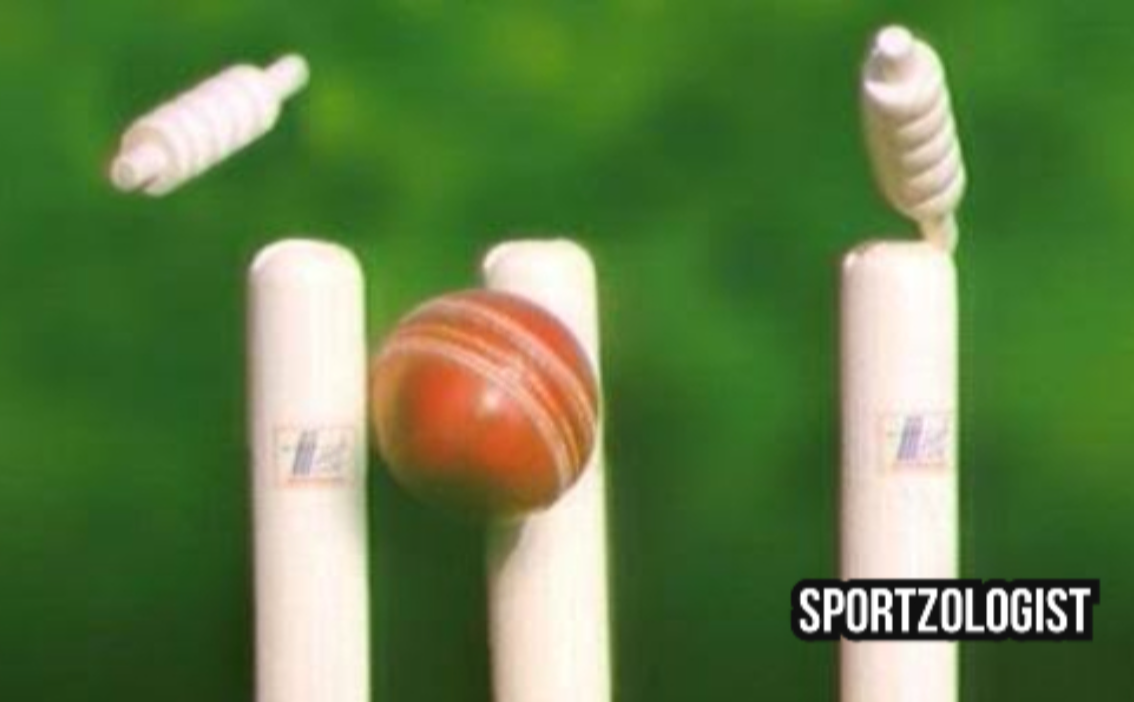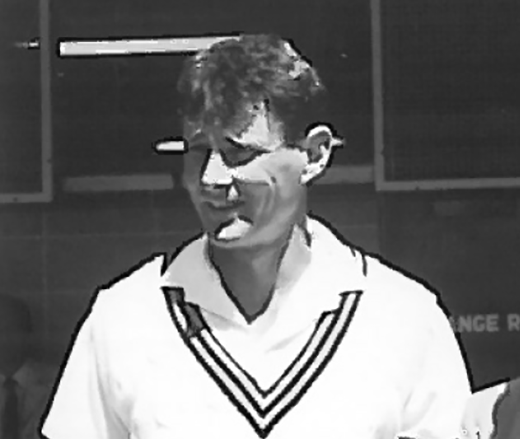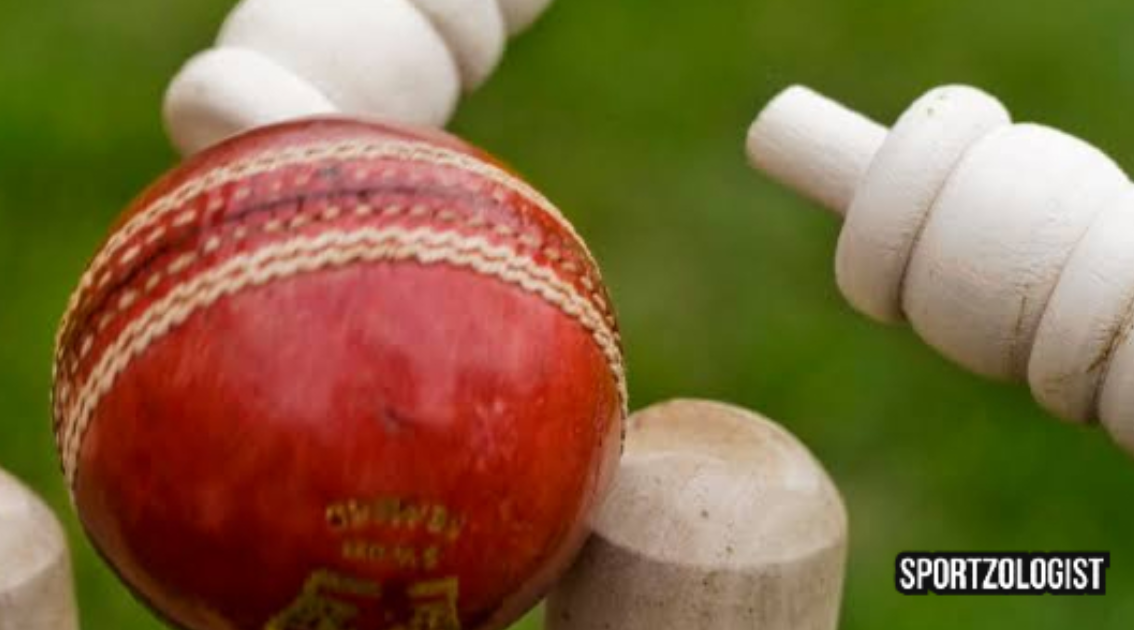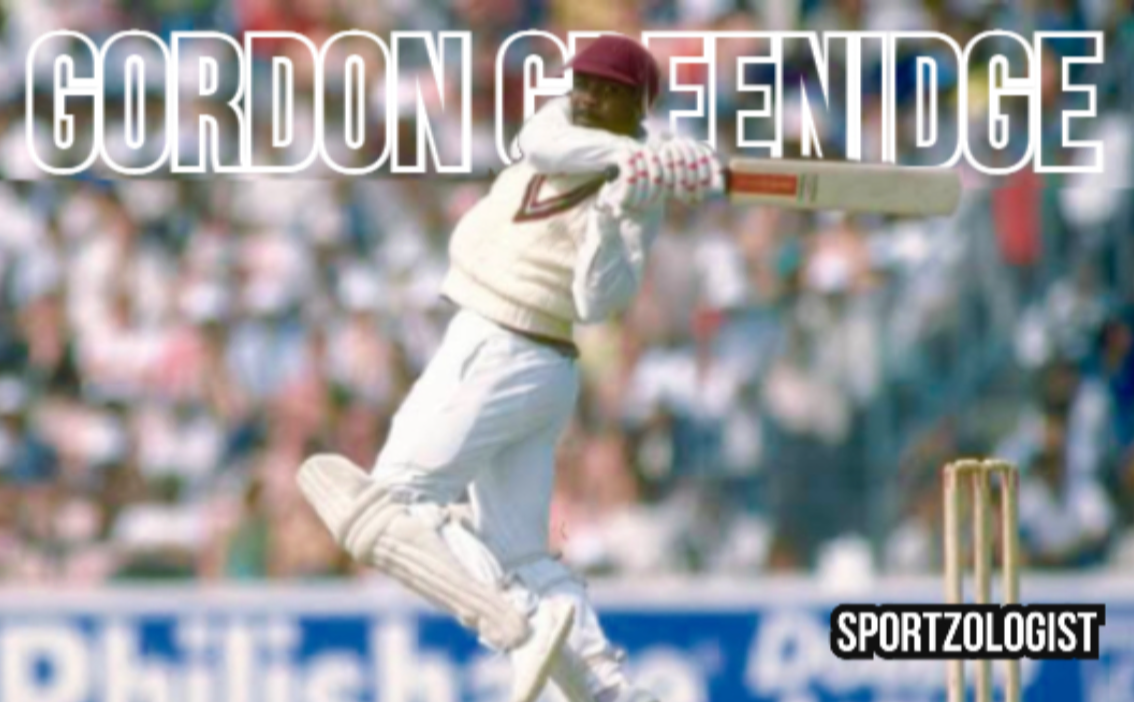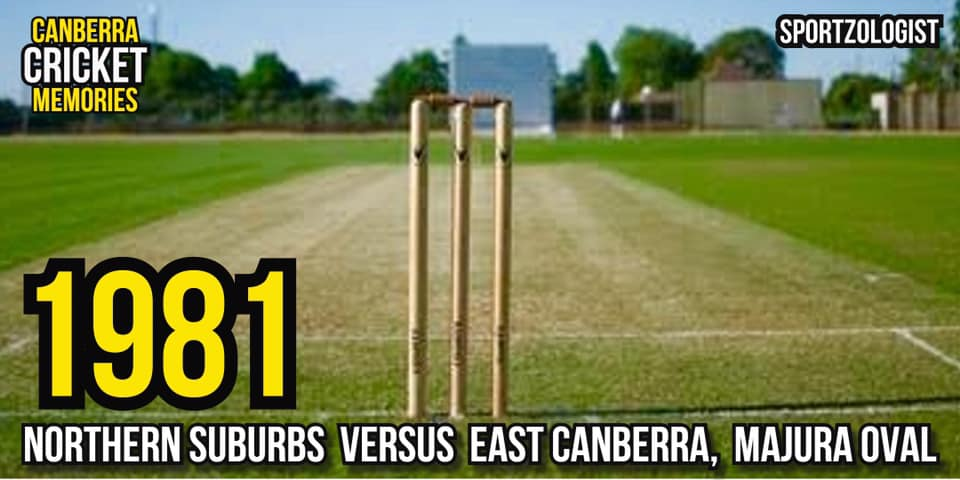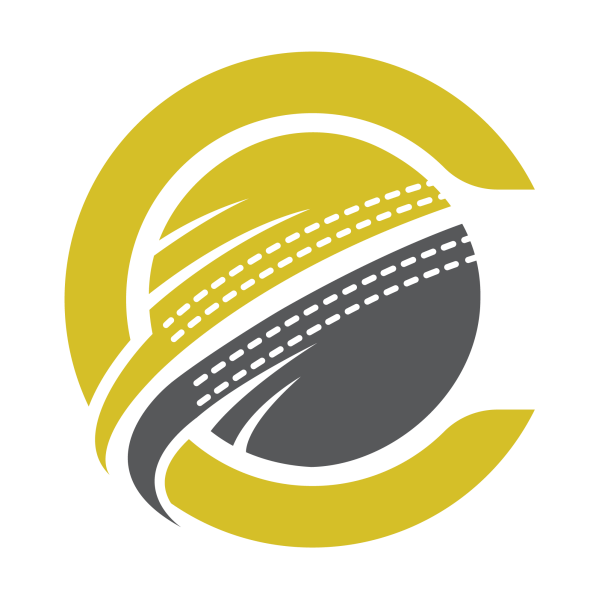About Me
Partner Sponsors
My Activity
question
Q: I would be hypocritical in the eyes of English cricket supporters, if I didn’t comment on the Sam Konstas ‘Bazball’ Boxing Day innings.
The Konstas innings was fuelled by adrenaline, youthful exuberance and wonderful hand eye coordination, however, for all its flashiness, there will come a time where the young opener will have to knuckle down and grind out the runs.
As I have posted previously, the ‘Bazball’ style of play displayed by Konstas on debut, as exciting as it was to watch, cannot be sustained successfully across all Test match conditions.
What makes me especially nervous is the premeditation of the Konstas ramp shot. When this shot comes off it can look spectacular, as it did early in his innings, however, the batsman can be made to look silly, especially in a Test match, if it doesn’t come off.
Konstas is a rare talent and a breath of fresh to the Australian cricket team and his aggressive style of play, certainly had Virat Kohli and the Indians as rattled, as he had the MCG crowd and TV viewers entertained.
Whether or not Konstas can sustain his ultra aggressive style of play long term in Test cricket is the burning question, however, in the meantime, it will be fun to watch
The Konstas innings was fuelled by adrenaline, youthful exuberance and wonderful hand eye coordination, however, for all its flashiness, there will come a time where the young opener will have to knuckle down and grind out the runs.
As I have posted previously, the ‘Bazball’ style of play displayed by Konstas on debut, as exciting as it was to watch, cannot be sustained successfully across all Test match conditions.
What makes me especially nervous is the premeditation of the Konstas ramp shot. When this shot comes off it can look spectacular, as it did early in his innings, however, the batsman can be made to look silly, especially in a Test match, if it doesn’t come off.
Konstas is a rare talent and a breath of fresh to the Australian cricket team and his aggressive style of play, certainly had Virat Kohli and the Indians as rattled, as he had the MCG crowd and TV viewers entertained.
Whether or not Konstas can sustain his ultra aggressive style of play long term in Test cricket is the burning question, however, in the meantime, it will be fun to watch
question
Q: A shout out to all cricketers past and present, especially if you’re living on the far north coast of NSW or South East Queensland.
There is a celebrity cricket match on 1 December 2024 in Ballina to raise awareness of Domestic and Family Violence.
If you’re interested, please call Tony the Sportzologist on 0401 609892
There is a celebrity cricket match on 1 December 2024 in Ballina to raise awareness of Domestic and Family Violence.
If you’re interested, please call Tony the Sportzologist on 0401 609892
question
Q: The Rise and Rise of Terry Hannam
On February 28, 1954, young Kingston all-rounder Terry Hannam, was selected for the senior Canberra XI team, led by future NSW Shield player John O’Reilly, to play Monaro at Cooma.
A mere eighteen months before his senior representative debut, Terry was simply a promising 14-year-old junior playing 3rd grade for Kingston, however, promising enough by seasons end to win the clubs batting and bowling awards for that grade.
At the beginning of the 1953/54 season and based on his previous years grade and U17 representative performances, the 15-year-old Terry skipped second grade and started the year in firsts.
Terry immediately performed well at first grade level, scoring valuable lower order runs with his powerful hitting and consistently taking wickets with his medium-pace bowling.
Batting at number 4 for the ACT U17 side against Monaro U17’s, Terry scored a dashing 92 with 15 fours and two sixes, to help his side into the final of the ‘Old Executive Cup’ competition.
On the back of 7/27 against Turner and 5/27 including a hat-trick against Combined Services, to go with his consistent run scoring, the ACT senior selectors penciled in Hannam’s name for the match against Monaro, a truly meteoric rise from 3rd grade to the top for the 15-year-old all-rounder.
With his selection for that Monaro match, at the tender age of 15 years 259 days, Terry Hannam remains the third youngest senior representative player in the 99 years of Canberra cricket.
Terry Hannam went on to become a Northern Suburbs stalwart with both his sons, Garry and Brett playing for the club.
Brett, also an ACT representative, played in the victorious 79/80 Norths First grade premiership side, before pursuing a successful AFL career.
On February 28, 1954, young Kingston all-rounder Terry Hannam, was selected for the senior Canberra XI team, led by future NSW Shield player John O’Reilly, to play Monaro at Cooma.
A mere eighteen months before his senior representative debut, Terry was simply a promising 14-year-old junior playing 3rd grade for Kingston, however, promising enough by seasons end to win the clubs batting and bowling awards for that grade.
At the beginning of the 1953/54 season and based on his previous years grade and U17 representative performances, the 15-year-old Terry skipped second grade and started the year in firsts.
Terry immediately performed well at first grade level, scoring valuable lower order runs with his powerful hitting and consistently taking wickets with his medium-pace bowling.
Batting at number 4 for the ACT U17 side against Monaro U17’s, Terry scored a dashing 92 with 15 fours and two sixes, to help his side into the final of the ‘Old Executive Cup’ competition.
On the back of 7/27 against Turner and 5/27 including a hat-trick against Combined Services, to go with his consistent run scoring, the ACT senior selectors penciled in Hannam’s name for the match against Monaro, a truly meteoric rise from 3rd grade to the top for the 15-year-old all-rounder.
With his selection for that Monaro match, at the tender age of 15 years 259 days, Terry Hannam remains the third youngest senior representative player in the 99 years of Canberra cricket.
Terry Hannam went on to become a Northern Suburbs stalwart with both his sons, Garry and Brett playing for the club.
Brett, also an ACT representative, played in the victorious 79/80 Norths First grade premiership side, before pursuing a successful AFL career.
question
Q: Over fifty years ago, on October 9, 1971, Northern Suburbs young enigmatic batsman, Geoff Clark, pounded a scintillating 147 against the strong East Canberra bowling line-up at Kingston in a first grade match.
Clark’s innings was the stuff of folklore at Northies when I was younger, however, this promising player was one of the most nervous starters I’ve seen, which is backed up by his career stats of 25 ducks from 154 innings, a duck innings percentage of 16.23.
Apart from the odd fifty and presumably due to those nervous yips, Geoff never emulated this epic innings again in a match, however, he was arguably the greatest net batsman I’ve ever seen.
On Tuesday and Thursday practice evenings, when there was no pressure on being dismissed, ‘Clarky’ would advance the fastest bowlers, hooking and driving with clinical precision and bravado like a man possessed.
It was a shame that in the middle where it counted, nerves really did stifle a batting career that, early on, promised greatness.
Clark was also infamous for being called for throwing nine times in three overs by the square leg umpire in the 1977 first grade Grand Final at Manuka Oval, for Norths against the eventual winners Western District.
This would come as no surprise to Norths members, as Clark was notorious on the dodgy club practice wickets for generating lift, cut and nasty pace, with an action that resembled a baseball pitcher.
There is no doubt that the offending umpire in that Final could have called every delivery a no ball, however, after three overs, Norths captain Graeme Smith mercilessly pulled Clark out of the attack and destined him forever to terrorising batsmen in the practice nets.
Clark’s innings was the stuff of folklore at Northies when I was younger, however, this promising player was one of the most nervous starters I’ve seen, which is backed up by his career stats of 25 ducks from 154 innings, a duck innings percentage of 16.23.
Apart from the odd fifty and presumably due to those nervous yips, Geoff never emulated this epic innings again in a match, however, he was arguably the greatest net batsman I’ve ever seen.
On Tuesday and Thursday practice evenings, when there was no pressure on being dismissed, ‘Clarky’ would advance the fastest bowlers, hooking and driving with clinical precision and bravado like a man possessed.
It was a shame that in the middle where it counted, nerves really did stifle a batting career that, early on, promised greatness.
Clark was also infamous for being called for throwing nine times in three overs by the square leg umpire in the 1977 first grade Grand Final at Manuka Oval, for Norths against the eventual winners Western District.
This would come as no surprise to Norths members, as Clark was notorious on the dodgy club practice wickets for generating lift, cut and nasty pace, with an action that resembled a baseball pitcher.
There is no doubt that the offending umpire in that Final could have called every delivery a no ball, however, after three overs, Norths captain Graeme Smith mercilessly pulled Clark out of the attack and destined him forever to terrorising batsmen in the practice nets.
question
Q: The 1930-31, Federal Capital Territory (FCT) Cricket Association final in Canberra was a match of epic proportions, far greater than any timeless Test match.
The scenario appeared simple. To find a winner, the match had to be played to a finish, meaning the completion of four innings by the two combatants, Ainslie and Northbourne.
The first days play was scheduled to commence on Saturday, March 21, 1931, however, due to heavy rain late in the week, the match did not start till the following Saturday, March 28.
In what was described as excellent conditions, Ainslie on winning the toss and batting first, through some very cautious play, had reached four for 155 when around 5-30pm an appeal against the light was upheld by the umpires and stumps were drawn.
The scenario appeared simple. To find a winner, the match had to be played to a finish, meaning the completion of four innings by the two combatants, Ainslie and Northbourne.
The first days play was scheduled to commence on Saturday, March 21, 1931, however, due to heavy rain late in the week, the match did not start till the following Saturday, March 28.
In what was described as excellent conditions, Ainslie on winning the toss and batting first, through some very cautious play, had reached four for 155 when around 5-30pm an appeal against the light was upheld by the umpires and stumps were drawn.
https://www.cricconnect.com/profile/212/tony-goodfellow/blog/1914/is-this-the-most-bizarre-premiership-decider-in-history
blog post
The 1930-31, Federal Capital Territory (FCT) Cricket Association final in Canberra was a match of epic proportions, far greater than any timeless Test match. ...
question
Q: In March of 1979, Western District, who were leading the first grade competition, played Northern Suburbs in the penultimate match before the semi-finals.
Norths, who were having a poor season, blooded some young players with a view to the future and realistically were given no chance against the powerful Wests lineup.
On a typical Majura wicket, that did no batsman any favours, Norths were sent in and bowled out in their first innings for 101, with Wests one for 22 in reply at stumps on the first day.
Rain during the week did nothing to settle the Majura wicket down, however, Wests Bruce Willett and Greg Beacroft on resuming their innings, safely commandeered the first 30 minutes taking the score to 41 before Willett was dismissed.
As the wicket dried out, the ball started playing more tricks than a magicians convention and in particular the decidedly quick Randall Strongman, was making the odd delivery rear from a good length.
Wests strong batting lineup were good enough to reach 6-98, only four runs from victory, when the wheels fell off and four wickets fell for no runs including three to Strongman in his last over.
Norths, having prised victory from the jaws of defeat, celebrated as if they had won the premiership, while Wests despondently headed to their dressing shed where their captain, Dene Moore, tore strips off them for losing to a bottom placed side.
Only a thin brick wall divided the two change rooms and Moore’s dressing down of his team provided wonderful entertainment to the young victorious Norths players.
However, there was still a couple of hours of playing time remaining, so Norths with one player absent, prepared to get in some extended batting practice for the next season.
The Wests captain Dene Moore was one of the great medium pace bowlers in the history of Canberra cricket and his competitive streak and pride, had not been factored into the equation.
Moore ripped through the opposition top order batting to have Norths 4-0 and eventually all out for 28, with Wests winning the match outright by nine wickets.
The Wests captain ended up with figures of 5-10 off ten overs and, in what must be a Canberra first grade record, an astonishing 8 wickets fell for no runs, Wests last four and Norths top four.
Norths, who were having a poor season, blooded some young players with a view to the future and realistically were given no chance against the powerful Wests lineup.
On a typical Majura wicket, that did no batsman any favours, Norths were sent in and bowled out in their first innings for 101, with Wests one for 22 in reply at stumps on the first day.
Rain during the week did nothing to settle the Majura wicket down, however, Wests Bruce Willett and Greg Beacroft on resuming their innings, safely commandeered the first 30 minutes taking the score to 41 before Willett was dismissed.
As the wicket dried out, the ball started playing more tricks than a magicians convention and in particular the decidedly quick Randall Strongman, was making the odd delivery rear from a good length.
Wests strong batting lineup were good enough to reach 6-98, only four runs from victory, when the wheels fell off and four wickets fell for no runs including three to Strongman in his last over.
Norths, having prised victory from the jaws of defeat, celebrated as if they had won the premiership, while Wests despondently headed to their dressing shed where their captain, Dene Moore, tore strips off them for losing to a bottom placed side.
Only a thin brick wall divided the two change rooms and Moore’s dressing down of his team provided wonderful entertainment to the young victorious Norths players.
However, there was still a couple of hours of playing time remaining, so Norths with one player absent, prepared to get in some extended batting practice for the next season.
The Wests captain Dene Moore was one of the great medium pace bowlers in the history of Canberra cricket and his competitive streak and pride, had not been factored into the equation.
Moore ripped through the opposition top order batting to have Norths 4-0 and eventually all out for 28, with Wests winning the match outright by nine wickets.
The Wests captain ended up with figures of 5-10 off ten overs and, in what must be a Canberra first grade record, an astonishing 8 wickets fell for no runs, Wests last four and Norths top four.
question
Q: The Day 'Hammer' Destroyed Queanbeyan With A Record Wicket Haul
In round two of the 1980/81 ACT season, Northern Suburbs big left-arm fast bowler Brett Hannam, took 7-26 in the first innings and 10-47 in the second against Queanbeyan at Majura Oval.
Nicknamed ‘Hammer’, Brett’s match figures of 17-73 are still to this day the best bowling figures in the 98 year history of first grade cricket in Canberra.
On winning the toss, Norths bowled first on the seamer friendly wicket, dismissing the Queanbeyan side for only 51. Hannam’s inswinger was on song that day as he cleaned bowled four batsmen in his 7-26 haul.
The Queanbeyan bowlers found the pitch also to their liking, as Norths the defending premiers, could only muster 65 in reply.
Batting a second time Queanbeyan were all at sea as Hannam, charging in from the City end, ripped through their lineup to claim all ten wickets, this time five batsmen clean bowled.
In round two of the 1980/81 ACT season, Northern Suburbs big left-arm fast bowler Brett Hannam, took 7-26 in the first innings and 10-47 in the second against Queanbeyan at Majura Oval.
Nicknamed ‘Hammer’, Brett’s match figures of 17-73 are still to this day the best bowling figures in the 98 year history of first grade cricket in Canberra.
On winning the toss, Norths bowled first on the seamer friendly wicket, dismissing the Queanbeyan side for only 51. Hannam’s inswinger was on song that day as he cleaned bowled four batsmen in his 7-26 haul.
The Queanbeyan bowlers found the pitch also to their liking, as Norths the defending premiers, could only muster 65 in reply.
Batting a second time Queanbeyan were all at sea as Hannam, charging in from the City end, ripped through their lineup to claim all ten wickets, this time five batsmen clean bowled.
https://www.cricconnect.com/profile/212/tony-goodfellow/blog/1448/the-day-hammer-destroyed-queanbeyan-with-a-record-wicket-haul
blog post
In round two of the 1980/81 ACT season, Northern Suburbs big left-arm fast bowler Brett Hannam, took 7-26 in the first innings and 10-47 in the second against ...
question
Q: Leading all-rounders in the history of ACT Cricket
The list of statistically the best all-rounders in ACT first grade cricket highlights, what a wonderful player Greg ‘G.I’ Irvine was. (Greg Irvine pictured)
On his day Greg Irvine’s batting could tear an attack apart and his bowling was pretty handy as his five wickets in a PM XI match is testimony to that.
Three names in the top five in Lyle Maloney, Lorne Lees and Bill Tickner dominated Canberra cricket in the early days.
The list of statistically the best all-rounders in ACT first grade cricket highlights, what a wonderful player Greg ‘G.I’ Irvine was. (Greg Irvine pictured)
On his day Greg Irvine’s batting could tear an attack apart and his bowling was pretty handy as his five wickets in a PM XI match is testimony to that.
Three names in the top five in Lyle Maloney, Lorne Lees and Bill Tickner dominated Canberra cricket in the early days.
https://www.cricconnect.com/profile/212/tony-goodfellow/blog/1349/leading-all-rounders-in-the-history-of-act-cricket
blog post
The following list of statistically the best all-rounders in ACT first grade cricket highlights, what a wonderful player Greg ‘G.I’ Irvine was. (Greg Irvine p ...
answered
Q: Greg Beacroft’s World Record Six Hitting Innings for Yass
In January 1979, Greg Beacroft playing for Yass first grade against Williamsdale in the Sunday competition scored 268 runs in 92 minutes at the O’Connor concrete pitch in Canberra.
The 21-year-old Beacroft, who played first grade for Western Districts in the Saturday competition, hit an amazing 29 sixes in his innings, which at the time, was reported to be an official world record.
Unfortunately, balls faced were not recorded in those days and I was told by a good mate who was playing in the match, that the innings would have been much quicker in time as some deliveries were deposited on to the bitumen surface of Barry Drive which runs past the oval. This meant that the fielder retrieving the ball had to scale a six-foot-high wire fence that bordered the road, significantly adding to the time that Beacroft batted for.
Peter O’Reilly, who was an ACT representative played in this match as well and the following is his recollection of Greg Beacroft’s innings.
“Greg was a bit dusty at the beginning of his innings as a few of his early sixes only just cleared the boundary. He was hung over from his 21st Birthday party the night before. He partnered mostly with a Yass guy by the name of Donny Douglass who played the perfect foil for Greg. Donny scored 29 singles in his score of 29 feeding Greg the strike. 29 sixes and 11 fours by Greg. There was a church service beginning across the road where Greg landed one nearly hitting a combi van on the way in and 50 minutes later again on the way out of the church grounds. It was an unbelievable innings and remember waking up the next morning to hear it on the national news with Keith Miller calling for Greg to be added to the Australian team against England.”
Sadly, Greg passed away a few years ago from cancer, however, his innings briefly made him a cricketing celebrity, with radio interviews locally and internationally, while his record stood till October of 2017, when Josh Dunstan hit forty sixes and nine fours in his innings of 307 for West Augusta against Central Stirling in the Port Augusta cricket association.
In January 1979, Greg Beacroft playing for Yass first grade against Williamsdale in the Sunday competition scored 268 runs in 92 minutes at the O’Connor concrete pitch in Canberra.
The 21-year-old Beacroft, who played first grade for Western Districts in the Saturday competition, hit an amazing 29 sixes in his innings, which at the time, was reported to be an official world record.
Unfortunately, balls faced were not recorded in those days and I was told by a good mate who was playing in the match, that the innings would have been much quicker in time as some deliveries were deposited on to the bitumen surface of Barry Drive which runs past the oval. This meant that the fielder retrieving the ball had to scale a six-foot-high wire fence that bordered the road, significantly adding to the time that Beacroft batted for.
Peter O’Reilly, who was an ACT representative played in this match as well and the following is his recollection of Greg Beacroft’s innings.
“Greg was a bit dusty at the beginning of his innings as a few of his early sixes only just cleared the boundary. He was hung over from his 21st Birthday party the night before. He partnered mostly with a Yass guy by the name of Donny Douglass who played the perfect foil for Greg. Donny scored 29 singles in his score of 29 feeding Greg the strike. 29 sixes and 11 fours by Greg. There was a church service beginning across the road where Greg landed one nearly hitting a combi van on the way in and 50 minutes later again on the way out of the church grounds. It was an unbelievable innings and remember waking up the next morning to hear it on the national news with Keith Miller calling for Greg to be added to the Australian team against England.”
Sadly, Greg passed away a few years ago from cancer, however, his innings briefly made him a cricketing celebrity, with radio interviews locally and internationally, while his record stood till October of 2017, when Josh Dunstan hit forty sixes and nine fours in his innings of 307 for West Augusta against Central Stirling in the Port Augusta cricket association.
A: Correct, the field is next to what was Western Districts home ground turf wicket. It’s not an overly large field, however, I wouldn’t say from memory that it’s overly small. What I can confirm is that everyone who witnessed Greg’s innings said it was unbelievable.
question
Q: Greg Beacroft’s World Record Six Hitting Innings for Yass
In January 1979, Greg Beacroft playing for Yass first grade against Williamsdale in the Sunday competition scored 268 runs in 92 minutes at the O’Connor concrete pitch in Canberra.
The 21-year-old Beacroft, who played first grade for Western Districts in the Saturday competition, hit an amazing 29 sixes in his innings, which at the time, was reported to be an official world record.
Unfortunately, balls faced were not recorded in those days and I was told by a good mate who was playing in the match, that the innings would have been much quicker in time as some deliveries were deposited on to the bitumen surface of Barry Drive which runs past the oval. This meant that the fielder retrieving the ball had to scale a six-foot-high wire fence that bordered the road, significantly adding to the time that Beacroft batted for.
Peter O’Reilly, who was an ACT representative played in this match as well and the following is his recollection of Greg Beacroft’s innings.
“Greg was a bit dusty at the beginning of his innings as a few of his early sixes only just cleared the boundary. He was hung over from his 21st Birthday party the night before. He partnered mostly with a Yass guy by the name of Donny Douglass who played the perfect foil for Greg. Donny scored 29 singles in his score of 29 feeding Greg the strike. 29 sixes and 11 fours by Greg. There was a church service beginning across the road where Greg landed one nearly hitting a combi van on the way in and 50 minutes later again on the way out of the church grounds. It was an unbelievable innings and remember waking up the next morning to hear it on the national news with Keith Miller calling for Greg to be added to the Australian team against England.”
Sadly, Greg passed away a few years ago from cancer, however, his innings briefly made him a cricketing celebrity, with radio interviews locally and internationally, while his record stood till October of 2017, when Josh Dunstan hit forty sixes and nine fours in his innings of 307 for West Augusta against Central Stirling in the Port Augusta cricket association.
In January 1979, Greg Beacroft playing for Yass first grade against Williamsdale in the Sunday competition scored 268 runs in 92 minutes at the O’Connor concrete pitch in Canberra.
The 21-year-old Beacroft, who played first grade for Western Districts in the Saturday competition, hit an amazing 29 sixes in his innings, which at the time, was reported to be an official world record.
Unfortunately, balls faced were not recorded in those days and I was told by a good mate who was playing in the match, that the innings would have been much quicker in time as some deliveries were deposited on to the bitumen surface of Barry Drive which runs past the oval. This meant that the fielder retrieving the ball had to scale a six-foot-high wire fence that bordered the road, significantly adding to the time that Beacroft batted for.
Peter O’Reilly, who was an ACT representative played in this match as well and the following is his recollection of Greg Beacroft’s innings.
“Greg was a bit dusty at the beginning of his innings as a few of his early sixes only just cleared the boundary. He was hung over from his 21st Birthday party the night before. He partnered mostly with a Yass guy by the name of Donny Douglass who played the perfect foil for Greg. Donny scored 29 singles in his score of 29 feeding Greg the strike. 29 sixes and 11 fours by Greg. There was a church service beginning across the road where Greg landed one nearly hitting a combi van on the way in and 50 minutes later again on the way out of the church grounds. It was an unbelievable innings and remember waking up the next morning to hear it on the national news with Keith Miller calling for Greg to be added to the Australian team against England.”
Sadly, Greg passed away a few years ago from cancer, however, his innings briefly made him a cricketing celebrity, with radio interviews locally and internationally, while his record stood till October of 2017, when Josh Dunstan hit forty sixes and nine fours in his innings of 307 for West Augusta against Central Stirling in the Port Augusta cricket association.
question
Q: When I first started playing grade cricket for my old club Northern Suburbs, back in Canberra, during the seventies, this infamous match from March 4, 1967, was mentioned quite a lot.
Northern Suburbs were vying for a place in the semi-finals and in the last game of the regular season they had to beat Kingston, outright, over the four innings to squeeze the Australian National University (ANU) out of the top four.
Kingston was all out for 150 runs in reply to Norths first innings of 194 and batting for a second time, Norths declared at 5 for 59, leaving Kingston 71 minutes to score 104 runs for outright victory.
Northern Suburbs were vying for a place in the semi-finals and in the last game of the regular season they had to beat Kingston, outright, over the four innings to squeeze the Australian National University (ANU) out of the top four.
Kingston was all out for 150 runs in reply to Norths first innings of 194 and batting for a second time, Norths declared at 5 for 59, leaving Kingston 71 minutes to score 104 runs for outright victory.
https://www.cricconnect.com/profile/212/tony-goodfellow/blog/1284/when-is-a-batting-side-all-out
blog post
When I first started playing grade cricket for my old club Northern Suburbs, back in Canberra, during the seventies, this infamous match from March 4, 1967, wa ...
question
Q: Ian Canney was regarded as one of the finest batsmen in ACT cricket in the sixties and seventies.
In my early years at Norths, I was in awe of him in the nets, thinking how you would get a ball past that front pad and bat, that appeared to be glued together.
On practice nights, if the turf nets at Majura or Dickson were a bit dodgy, which was most of the time, Ian Canney would look decidedly uncomfortable against the short stuff from quick bowlers like the aptly named, Randal Strongman. Generally speaking, Canney wasn’t on his ‘Pat Malone’ there.
However, it was a completely different story when the spinners were on, and Norths did have some very fine spinners in Graeme Smith and Graham Read.
Ian Canney had sublime footwork to spin bowling of any kind, so it was no surprise to learn that on February 1, 1968, the tall right-handed ‘John Newcombe’ lookalike, playing for the Southern NSW XI against the touring Indians, peeled of a magnificent unbeaten century at Manuka Oval.
In severe heat, watched by a reported 2,000 spectators, Canney took full toll of a typical Manuka batting pitch and a lightning-fast outfield, to punish a near Test bowling lineup, which included the great Bishan Bedi. Canney stroked 15 fours to run the Indians ragged in the dry Canberra heat.
On reaching his century, the Southern XI captain, Kevin McCarty, retired Canney and after his departure, the locals batting fell away.
Remarkably, Canney’s unbeaten 101 which took only 128 minutes, was his first century in either First grade or representative cricket.
The star-studded Indian batting lineup chased down the local team’s total with five wickets in hand, but, the talking point for many years was Ian Canney’s batting on that hot Thursday in February 1968.
In my early years at Norths, I was in awe of him in the nets, thinking how you would get a ball past that front pad and bat, that appeared to be glued together.
On practice nights, if the turf nets at Majura or Dickson were a bit dodgy, which was most of the time, Ian Canney would look decidedly uncomfortable against the short stuff from quick bowlers like the aptly named, Randal Strongman. Generally speaking, Canney wasn’t on his ‘Pat Malone’ there.
However, it was a completely different story when the spinners were on, and Norths did have some very fine spinners in Graeme Smith and Graham Read.
Ian Canney had sublime footwork to spin bowling of any kind, so it was no surprise to learn that on February 1, 1968, the tall right-handed ‘John Newcombe’ lookalike, playing for the Southern NSW XI against the touring Indians, peeled of a magnificent unbeaten century at Manuka Oval.
In severe heat, watched by a reported 2,000 spectators, Canney took full toll of a typical Manuka batting pitch and a lightning-fast outfield, to punish a near Test bowling lineup, which included the great Bishan Bedi. Canney stroked 15 fours to run the Indians ragged in the dry Canberra heat.
On reaching his century, the Southern XI captain, Kevin McCarty, retired Canney and after his departure, the locals batting fell away.
Remarkably, Canney’s unbeaten 101 which took only 128 minutes, was his first century in either First grade or representative cricket.
The star-studded Indian batting lineup chased down the local team’s total with five wickets in hand, but, the talking point for many years was Ian Canney’s batting on that hot Thursday in February 1968.
question
Q: It’s probably a little-known fact, outside the ACT, that West Indian great Gordon Greenidge, who was still playing Tests at the time, played First Grade cricket in Canberra.
It was the 89-90 season and my old club Northern Suburbs had just amalgamated with City-Daramalan to form Canberra North-Daramalan. The amalgamation came about as some of the older inner-city club’s Junior resources had started to fall.
This combining of clubs also put at risk the deal City-Daramalan had put together, through several major sponsors, to secure Greenidge’s services for playing and coaching young cricketers.
The Canberra Times reported at the time “The deal is believed to involve about $30,000 plus car for October to February, when Greenidge has to return to the West Indies to qualify for the 1990 tour of England”. This obviously was a significant amount for the time.
It was the 89-90 season and my old club Northern Suburbs had just amalgamated with City-Daramalan to form Canberra North-Daramalan. The amalgamation came about as some of the older inner-city club’s Junior resources had started to fall.
This combining of clubs also put at risk the deal City-Daramalan had put together, through several major sponsors, to secure Greenidge’s services for playing and coaching young cricketers.
The Canberra Times reported at the time “The deal is believed to involve about $30,000 plus car for October to February, when Greenidge has to return to the West Indies to qualify for the 1990 tour of England”. This obviously was a significant amount for the time.
https://www.cricconnect.com/profile/212/tony-goodfellow/blog/1256/when-gordon-greenidge-played-first-grade-cricket-in-canberra
blog post
It’s probably a little-known fact, outside the ACT, that West Indian great Gordon Greenidge, who was still playing Tests at the time, played First Grade cric ...
question
Q: In the 1970’s and 80’s, Northern Suburbs home ground in Canberra, was the picturesque Majura Oval, in the suburb of Ainslie.
However, as beautiful as this enclosed field looked, the wicket area had hidden demons for many a batsman and the outfields layer of thick grass, kept even the hottest of smoked cover drives down to either one run, or a risky two at best.
This was the backdrop for a battle that has stuck vividly in my memory bank for forty years.
In this 1981 match, East Canberra batted first and Norths representative opening bowlers, Brett Hannam and Dene Moore, did a demolition job on their batting lineup, rolling them for 37, similar to the way the same pair had dismantled Ginninderra the previous year at Majura for 33.
However, as beautiful as this enclosed field looked, the wicket area had hidden demons for many a batsman and the outfields layer of thick grass, kept even the hottest of smoked cover drives down to either one run, or a risky two at best.
This was the backdrop for a battle that has stuck vividly in my memory bank for forty years.
In this 1981 match, East Canberra batted first and Norths representative opening bowlers, Brett Hannam and Dene Moore, did a demolition job on their batting lineup, rolling them for 37, similar to the way the same pair had dismantled Ginninderra the previous year at Majura for 33.
https://www.cricconnect.com/profile/212/tony-goodfellow/blog/1216/northern-suburbs-v-east-canberra-at-majura-oval-in-1981
blog post
In the 1970’s and 80’s, Northern Suburbs home ground in Canberra, was the picturesque Majura Oval, in the suburb of Ainslie.However, as beautiful as this enclosed field looked, the wicke ...










